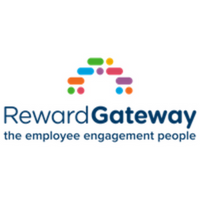4 strategies to keep employees coming back for more (includes fun video)
Well it’s certainly happened to me during my over 20 years as a rewards professional, so I’m guessing that if it hasn’t happened to you yet, it will at some point in time (sorry!).
I’ve tried lots of approaches and strategies to overcome this challenge, but the best ones have been those I’ve borrowed from those in the marketing world. Why? Because one of the key objectives of a marketer is to get their consumers coming back over and over again to buy their products, which is a lot like our objective of getting our employees to come back to engage with our benefits.

Here are four strategies to help you get your employees coming back for more:
1) Deliver fun
The fun factor is something which marketers say is critical to successfully attract new customers, retain existing ones and deliver a lasting experience. They do this by entertaining their customers, delivering a bit of fun along the way. Think about it, if something is entertaining or fun, aren’t you more apt to pay attention?
To illustrate this let me share with you how we recently put a bit of fun into communicating to our employees about our global staff lottery benefit. Although it’s a fantastic benefit where employees can randomly be selected to win cash awards, employees have lost a bit of interest in it as it’s been around for a few years.
To overcome this the team who run the lottery, Rob, Adam and Chris, developed a fun and engaging video to make sure that all employees paid attention. Here’s the link so you can watch it, enjoy!
2) Sell the sizzle not the steak
‘Sell the sizzle not the steak’ is a common phrase which is used by marketers and salespeople, and talks about focusing on the experience around a product rather than simply on the product itself.
The rationale is that you should appeal to the senses and emotions of a buyer as this is what motivates most people to purchase a product. For example, you shouldn’t talk about the technology behind a hoover, but focus on how you’ll be able to clean your house in half the amount of time.
For some benefits this strategy works quite well, as the experience is what drives engagement better than the product itself. Let’s take a pension scheme, where the product is a pot of money being held for retirement. For most employees this is not the most interesting of products, partly because they don’t understand it and partly because they can’t relate to it as the experience is so far in the future.
By selling the sizzle, so in this case the experiences associated with retirement, we are better able to sell the benefit. You can do this by talking about the employee’s lifestyle when they’re retired, so for example having money to travel, do things with and for family members, etc., which makes it more engaging.
Find ways to sell the sizzle of the benefit over and over again, mixing up the message on the experience, finding the one or ones which will engage with your employees.
3) Get personal
In the marketing world they say that companies need to see their customers as people and not data points. They talk about finding ways to be personal with their customers and connect with them on a human level.
The same is true with our employees and how we ‘sell’ them our benefit programmes. We need to find ways to personalise their benefit’s experience, answering the key question ‘what’s in it for me’ (WIIFM).
For example, for an employee discount platform instead of re-communicating generic information on savings, find ways to personalise messages based on the employee’s individual shopping patterns or habits, using the technique of segmentation to get the right messages to the right people.
By adding this personal touch they’ll immediately see WIIFM, and come back to your messages time and time again.
4) Build clout
There are two meanings for the word clout - one is to hit someone over the head with a heavy object, and the other is to achieve a sense of power or influence over others.
Both work when it comes to achieving our objective of getting our employees to engage with our benefits, but the second one is probably a bit less risky in the workplace.
To achieve clout you need to get your employees to believe and trust your product, your benefit programme. A strategy used by many marketers to is to find advocates, people who will share your beliefs and speak to your audience. Since you need to influence and reach as many employees as possible, they’re invaluable in making sure your messages reach the optimum number of people.
One way of managing this is through social media, setting up channels where your evangelists can often and effectively help build the trust and interest in your benefits. By doing this you’ll be building and increasing your engagement team with little to no extra effort.
So there you have it, four strategies to keep your employees coming back for more. If you think like a marketer when you’re communicating with your customers (employees) about your product (benefits) then you’ll have a repeat client (employee) base engaging with their benefits on a regular basis.
Debra Corey is group reward director at Reward Gateway.
This article was supplied by Reward Gateway.
Supplied by REBA Associate Member, Reward Gateway
We help the world's leading companies with an employee engagement platform.







